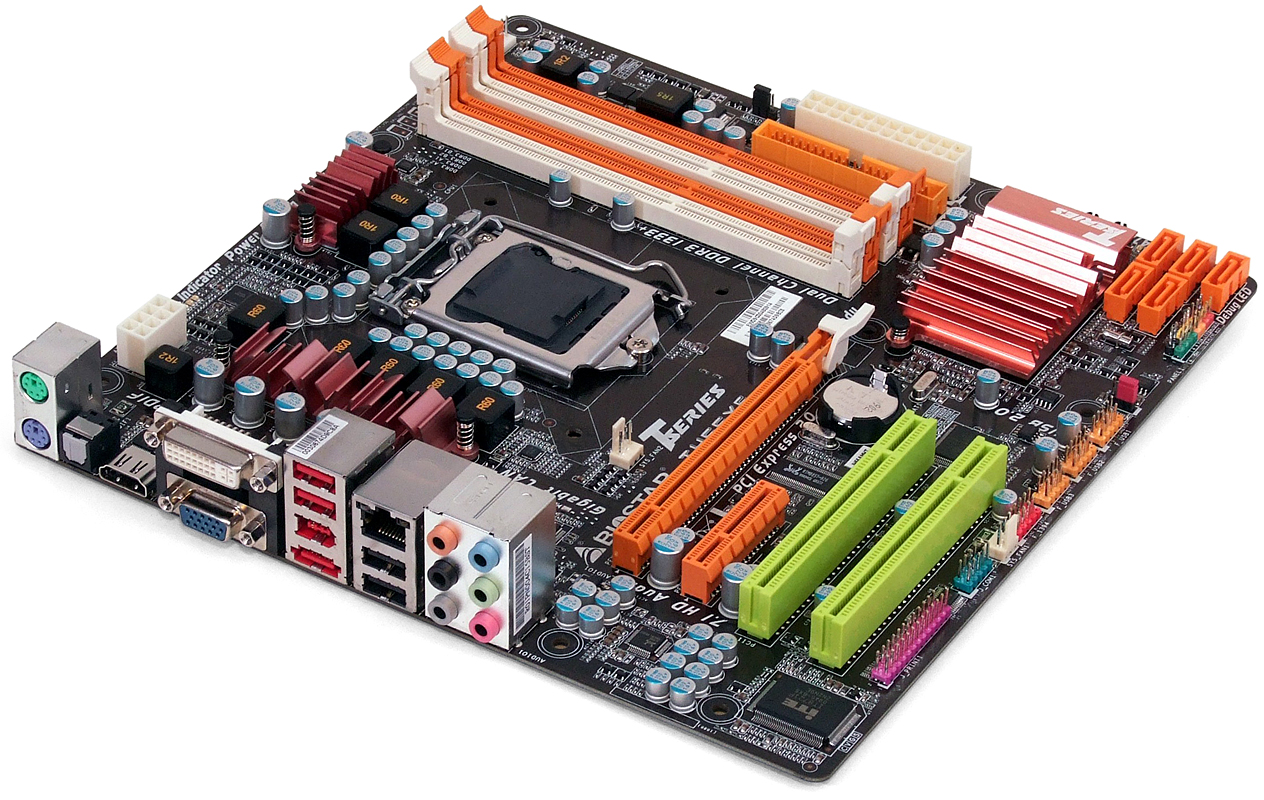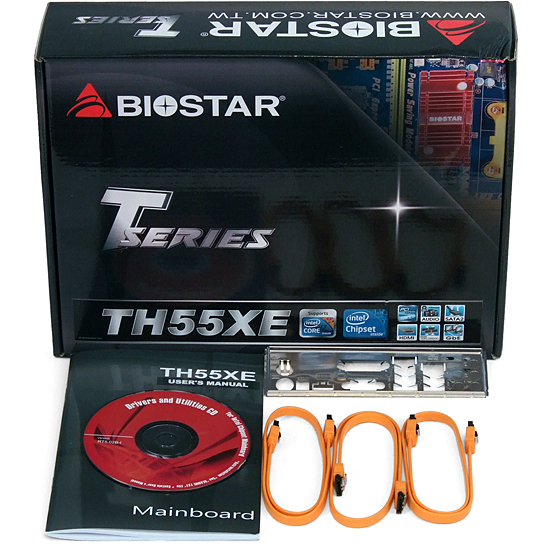Budget Computing: Nine H55 And H57 Motherboards Compared
Biostar TH55XE
Biostar has spent the last few years trying to make the biggest splash possible in the overclocking arena, yet the company still knows how to add value through features. A Web price starting at around $105 gets TH55XE buyers a choice of HDMI, DVI, and VGA outputs, dual-display compatibility, eSATA, IEEE-1394, and a variety of internal interfaces.
A DVI-I connector on the back panel gives the appearance of support for a second VGA monitor, but dual-analog displays are not an option for any of today’s products. Standard DVI-to-VGA adapters won’t work with this digital-only output, which probably uses the “wrong” connector in order to expand compatibility with dual-format cables.
Among the TH55XE’s internal interfaces are PCIe x16 and x4, two PCI, and four DIMM slots. While home theater and compact gaming system builders will prefer the three dual-port USB and single FireWire headers, system integrators will appreciate the legacy Ultra ATA, parallel, and serial ports that make this a drop-in upgrade for many older systems. Biostar even added internal power and reset buttons for the bench testing crowd.
Internal SATA port count is reduced to five, since Biostar relies on the chipset for eSATA, but we don’t perceive that as a major limitation since smaller cases usually have fewer than six drive bays. Perpendicular SATA ports are also ideal for small cases, as these are less likely to be blocked by nearby drive cages and Biostar places all five far below the PCIe x16 slot to allow installation of big graphics cards.
The TH55XE is, in fact, one of the few motherboards about which we have no layout complaints, as even the front-panel audio and FireWire headers are each located several inches away from the bottom rear corner to ease cable installation. Yet, we do wish that the x4 slot were of the open-ended variety, even though mounting an x16 card there (for additional displays) would have required relocation of the clock battery.
Biostar is one of the few companies to provide MOSFET sinks for the CPU voltage regulator of an inexpensive microATX motherboard, adding to the confidence of any mid-market overclocker seeking big performance from a small package.
BIOS Features
Get Tom's Hardware's best news and in-depth reviews, straight to your inbox.
The TH55XE includes all of the overclocking features found in most of its bigger brothers, with separate submenus allowing access to the more expert-friendly settings.
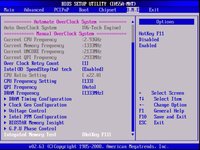
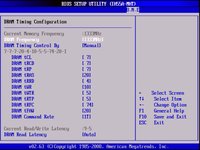
There aren’t any automatic settings for individual timings, but the timings detected at boot remain when manual configuration mode is selected. Changing unfamiliar settings to higher-speed defaults requires one to choose automatic timing mode, set the higher memory speed, and reboot.
Biostar allows both over-voltage and under-voltage settings for the CPU and DRAM. Overclockers will appreciate the ability to set the CPU core to 200mV over stock and the DRAM up to 2.55V, although silent PC enthusiasts might be disappointed by the CPU core voltage limit that only goes as low as 80mV below stock and 1.30V DRAM.
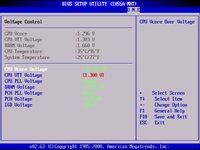

Biostar’s CMOS Data Reload feature allows saving custom BIOS configurations as user profiles, and the TH55XE supports up to 10 of these.
Accessories
One great place for a value-oriented manufacturer to stand out visually is with its installation kit. Biostar doesn’t. Included, but not shown, is a single four-pin-to-SATA power adapter and a Velcro strap that held these cables together.
-
Crashman wintermintDo anyone know how good is the integrated graphics found in these mobos? Can it handle some games?Reply
It's not on the motherboard, it's on the CPU. Different CPU's have different clock speeds for the GPU. And it can't even play most games, let alone play them smoothly:
http://www.tomshardware.com/reviews/intel-clarkdale-core-i5-661,2514-11.html -
liquidsnake718 useless... this is just for HD movies and simple web based games, onboard gpus on motherboards are even better than this intel..... i wonder if this was larrabee...... or if larabee will really come to fruitition as I read in a toms article its basically dead.... however i wonder if this was larrabee.....Reply -
anamaniac I'm sad to see Quantum Force (Foxconn's enthusiast line, such as the Bloodrage) die.Reply
At least Foxconn still makes really cheap stuff...
Honestly though, I'm more interested what's the lowest voltage you can get on stock clocks and DDR3 1066 cas6.
=) -
dertechie wintermintDo anyone know how good is the integrated graphics found in these mobos? Can it handle some games?Reply
The IGP is integrated into the Clarkdale CPU. I believe it is simply a further evolution of the X4500HD, and can at least now claim to be on rough par with ATI's integrated graphics, assuming that AMD hasn't done much to up the ante in the 800-series chipsets. Check the reviews of the i5-661 and the i3-5x0s. The 661 is the fastest IGP they sell (there's a reason reviewers all got that particular chip), at 900 MHz, the others are clocked at 733 MHz or 533 MHz. No, it can't run Crysis.
Larrabee is dead, it wasn't worth it to Intel to actually build it. The project isn't dead, but Larrabee Mk I will never see mass production silicon. -
enzo matrix Why do you guys only ever compare P55 and P57 boards? What about AM3? Or even 775 and AM2+?Reply -
anamaniac wintermintDo anyone know how good is the integrated graphics found in these mobos? Can it handle some games?Reply
http://techgage.com/article/overclocking_intels_core_i5-661/1
Intel i5-661.
CPU at 4.3GHz. IGP at 1133MHz. Both are at stock clocks.
ASUS P7H55D-M EVO
Crysis Warhead (1024x768, assuming low settings), 26FPS.
It can play Crysis. =) -
ta152h enzo matrixWhy do you guys only ever compare P55 and P57 boards? What about AM3? Or even 775 and AM2+?Reply
At least they moved to H55/H57, which is a platform that should sell a lot, rather than the brain-damaged P55 platform, which most sites spend a lot of time trying to convince (not that successfully, based on the bad sales) is a great platform.
Lynnfield/P55 is such a strange product, and appeals to such a limited segment of the market. It's not cheap, but it's a high-end product either. So, you get squeezed by x58, which is the real platform, or LGA 775, and now H55/H57 from below. It's not a big market segment, and I think it makes Intel's line a little confusing to average consumers, especially since the Clarksdale CPUs overlap it in cost from below, and the Bloomfield do from above.
It's obvious Intel didn't want to release CPUs with an IMC for the mainstream until they could move the IGP on-board the CPU. Since the IGP has to use the memory controller, there are compromises however you do it when you have an IMC. You either go to the processor, or you add the logic on the IGP (making it redundant), so Intel avoided that problem by putting it on the processor. The P55 is again neither fish nor fowl. It's got limited PCIe lanes, but doesn't have an IGP either.
There's a small segment where it makes sense. It's power efficient and the performance is only slightly less than Bloomfield in many situations, but I think the average consumer is going to find the H55/H57 much better for their needs (an IGP is critical in this market), and the enthusiast will want the full-blown Bloomfield. For that reason I think these motherboards are significant even though the P55 isn't. Maybe you don't want it, but, you'll probably have a friends/family neighbors asking about a computer with these products. They aren't technical marvels with their weird memory controller placed in the video controller, but aside from the distasteful technical compromises Intel made, they still address the market and needs of most people very well. The only one that is so offensive I could never bring myself to recommending is the new Pentium version. It probably is fine for most people, but it's so offensive, it's painful to recommend. I think LGA 775 is better at that point. Or AMD, of course. -
daniel266 WOW ! one more article about intel !! why im not suprised... hope that this comment dont disapear magically...Reply -
JohnnyLucky Thank you for including audio & video encoding benchmarks and productivity benchmarks.Reply
